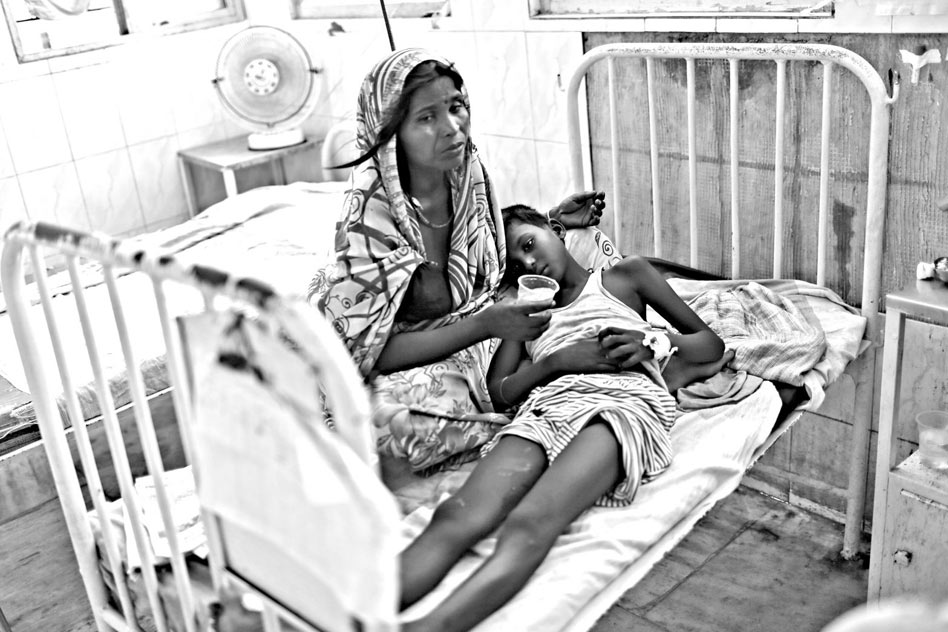
Why Providing Quality Healthcare To Every Indian Should Be Among The Government's Top Priorities
20 Oct 2015 8:29 AM GMT
Editor : Sudhanva Shetty Shetty
Writer, coffee-addict, likes folk music & long walks in the rain. Firmly believes that there's nothing more important in a democracy than a well-informed electorate.
Image Source: todayonline
India’s healthcare system has come a long way since ancient times when medicine was intertwined with superstitions and religion. Healthcare is one of the largest service sectors in India, and is ever-growing. However, it is still rudimentary in its current form and has a long way to go before it reaches acceptable standards. The World Health Organization’s 2000 World Health Report ranked India’s healthcare system at 112 out of 190 countries. Poverty, prevalence of slums, unplanned urbanization, limited government spending and poor policies have made the Indian healthcare system a flawed one – and a more or less incompetent one.
A popular method to chart healthcare efficiency is by calculating the percentage of households that are cajoled into poverty due to out-of-pocket spending to meet healthcare costs. 31% of the Indian people live below the international poverty line, and many of these individuals refrain from hospital visits due to financial woes. According to a 2011 study in the Lancet medical journal, a full 37.6% of low-income urban residents and 43.3% of low-income rural residents who did not seek care when ill listed financial hardship as the number-one reason. By comparison, only 1.9% of the richest Indian urban residents and 21.1% of the richest rural residents who did not seek care when ill reported income as their primary constraint. It is clear from these numbers that health and poverty are inter-related, and the government can’t tackle one of the problems without confronting the other.
India’s economic growth has been a global success story and as far as GDP rise is involved, the future appears bright for India. However, the percentage of the GDP allotted to healthcare is uninspiring. India’s spending on healthcare increased from about 3.5% to 5.0% over the period 1988-2002. In countries like the USA and the UK, healthcare accounts for more than 18% of the GDP. Meanwhile, government spending on healthcare has hovered around 20–25% during the past two decades. If the government were to increase government spending on healthcare – like in the West – it would improve health conditions of millions of Indians. To do this India needs to control spending in other fields without causing any undesirable effects.
On a positive note, India’s life expectancy has increased from 50 years in the 1970s to 63 years in the 2000s. Also, infant mortality has plummeted appreciably during the same period. However there is no definite government framework to deal with malnutrition and starvation, or even to provide for the population which is slowly living longer than before. India has over 200 million malnourished people, and 70,000 dying of hunger every day.
Studies have reported that even licensed doctors provide poor-quality services, such as over-prescribing drugs, and smaller private hospitals lack basic medical equipment and trained personnel. The public sector, too, is inefficient, with shortages of drugs and consumables and frequent absenteeism. Only around 15% of the population has any type of health insurance. Also, higher-income people, urban area–based workers, and government employees are the predominant recipients of health insurance, and low-income farmers, agricultural labourers, unskilled employees and entrepreneurs are less likely to be covered.
So why is healthcare not a major part of political rhetoric? Partly because the other issues that India faces like government corruption, border disputes, religious tensions etc. make universal healthcare seem less important. Also, interest payments and entitlement liabilities have greatly constrained the government’s fiscal capacity to fund social programs such as healthcare. The economic crises India faced in the early 1990s also led Indian policymakers to place a high priority on economic growth. Health spending as a proportion of total government recurrent spending fell from 4.5% in 1985–86 to 3.3% in 2004–05. It is currently hovering around 5% and is still as insufficient as ever.
At the same time, though, India is at the centre of a blooming medical tourism industry. Here, by global standards, the best diagnostic tests and procedures can be had for a fraction of Western prices, a fact that fuels medical tourism to the tune of an estimated $78.6 billion in India. India’s corporate hospitals are among the best in the world, but a distant dream for the country’s millions of poor.
In conclusion, a proper healthcare system in India is mandatory if India really wants to realize its global ambitions. It is clear that to cater to the needs of a growing population the government has to take a more active role, increase spending on healthcare, frame concrete policies and provide universal health insurance. This has to happen with fruitful public-private partnerships that have a defined, effective goal. India is swiftly becoming urbanized, and this trend has to be supported with proper urban planning to halt any further slums, organization of existing slums, better roads and housing and availability of standard medicines. Better doctors are a part of this solution, and more number of medical colleges can help achieve this goal.
The Modi Government has expressed interest on this issue since it took office. Providing healthcare to every Indian, rich and poor, urban and rural, is the need of the hour, and the Government must work tirelessly to achieve this goal in the near future.
 All section
All section













